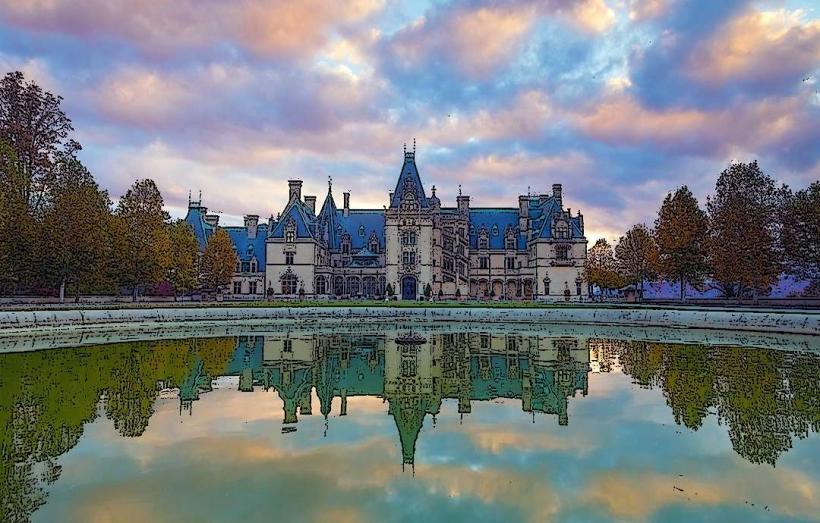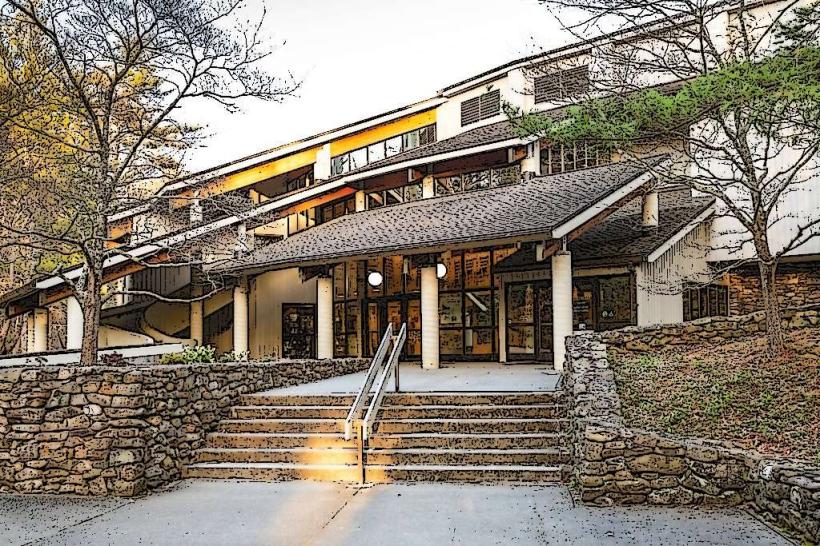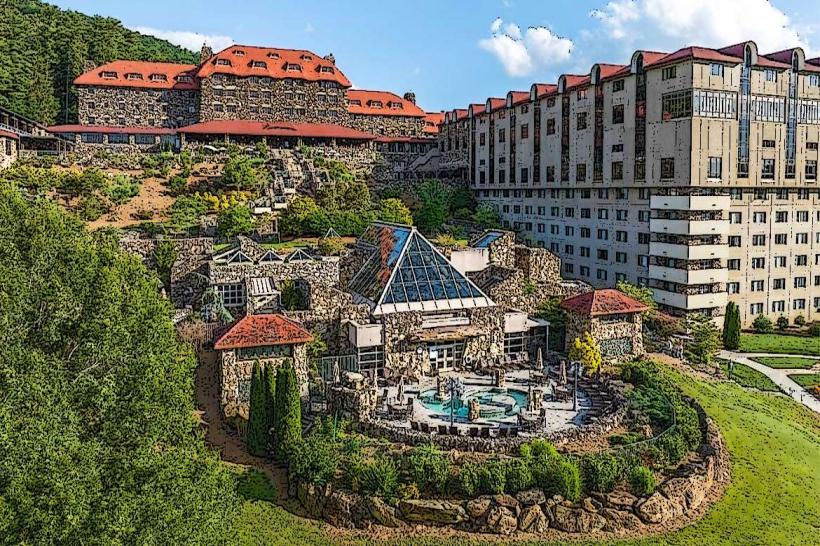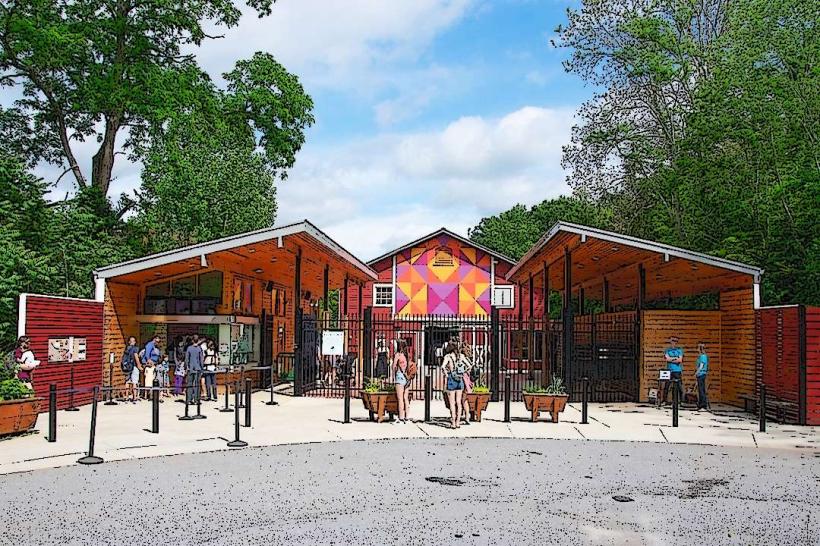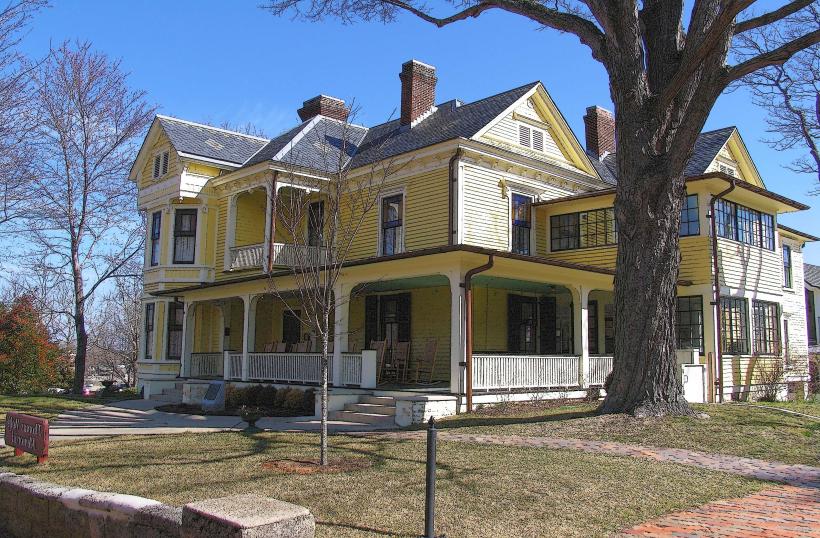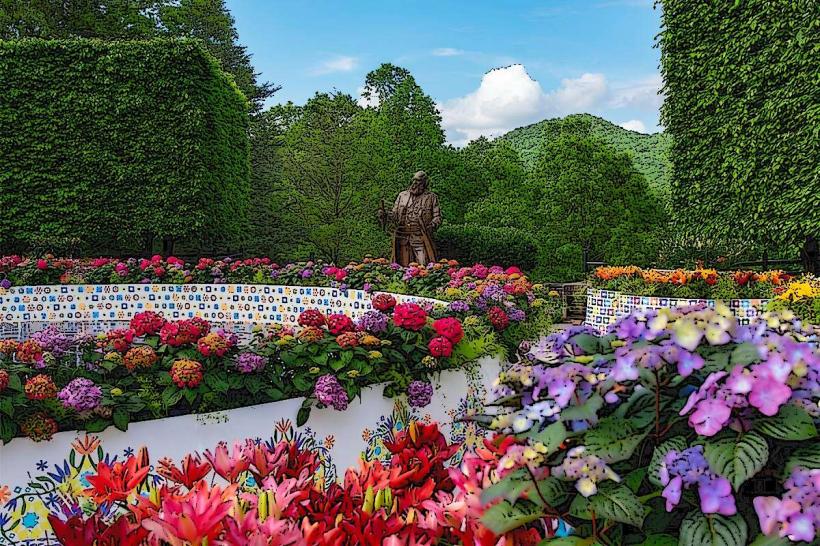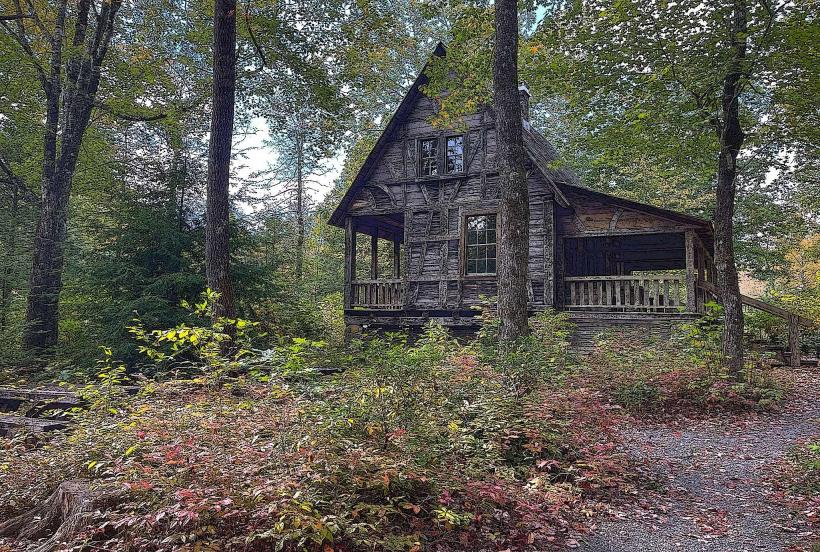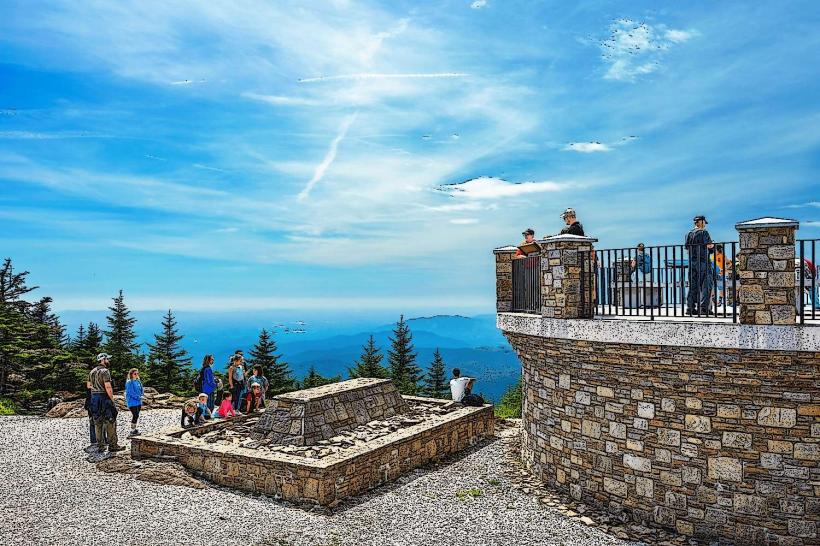Information
Landmark: Blue Ridge ParkwayCity: Asheville
Country: USA North Carolina
Continent: North America
Blue Ridge Parkway, Asheville, USA North Carolina, North America
Overview
Winding 469 miles through the misty Appalachian Highlands of North Carolina and Virginia, the Blue Ridge Parkway offers one of the most breathtaking and unforgettable drives in the country.Nicknamed “America’s Favorite Drive,” it winds between Shenandoah National Park in Virginia and the Great Smoky Mountains in North Carolina, unfolding sweeping mountain views, vibrant forests alive with birdsong, deep cultural roots, and endless ways to explore.I stood there, heart thudding like a drum in my chest.The route stretches 469 miles from Rockfish Gap near Waynesboro, Virginia-where it meets Skyline Drive in Shenandoah National Park-down to Cherokee, North Carolina, at the gateway to Great Smoky Mountains National Park, climbing from about 650 feet by the James River to over 6,000 feet atop Richland Balsam.Two.Work on the project kicked off in 1935 under Franklin D. Roosevelt’s New Deal, with the first shovels biting into the dry earth that summer.Roosevelt’s New Deal created jobs and built parks, trails, and other places where people could gather and enjoy the outdoors.The road was built to highlight the wild, rolling charm of the southern Appalachian Mountains, where mist often clings to the ridges at dawn.The project spanned over 52 years, ending in 1987 with the last piece-the Linn Cove Viaduct curving gracefully around Grandfather Mountain.The National Park Service runs the parkway, a winding scenic drive that doubles as a long, green park dotted with over 200 overlooks, trails, and historic landmarks.Three.The Blue Ridge Parkway is famous for its sweeping mountain vistas, rolling ridges, and bursts of seasonal color-like fiery red maples in autumn.In spring, dogwoods burst into white blooms, rhododendrons glow pink, and wildflowers dot the grass like confetti.Summer brings lush green hills and the crisp, cool air of the mountains.In fall, blazing reds and golds pull thousands of leaf‑peepers to the hills each October.Winter brings snow-dusted peaks and glittering ice formations, though a few trails may shut down when the drifts pile high.Heading south from the start, Humpback Rocks at milepost 5.8 offers a restored hillside farm and sweeping views of the mountains.Peaks of Otter (MP 86) offers winding hiking trails, a cozy lodge, and the striking rise of Sharp Top Mountain.Mabry Mill, at milepost 176.1, is a favorite stop on the parkway-its weathered wheel turning slowly in the creek draws countless photographers.Doughton Park (MP 241) offers wide, sunlit meadows, winding trails, and plenty of chances to spot deer moving through the grass.At milepost 304.4, the Linn Cove Viaduct sweeps in a graceful S-curve along the shoulder of Grandfather Mountain, its concrete deck clinging to the slope like a ribbon.Craggy Gardens (MP 364) bursts into color in early summer, with slopes dotted in bright purple blooms.Mount Pisgah (MP 408) offers a historic inn and a winding trail system shaded by tall pines.Richland Balsam Overlook (MP 431.4) sits at 6,053 feet, the parkway’s highest point, where the air feels crisp and thin.Waterrock Knob (MP 451.2) offers sweeping 360-degree views from its summit, where the wind cuts cool across the ridge.Number four in Roman numerals-IV-stood in bold at the top of the page.Recreation and activities include hiking, with more than 370 miles of trails weaving through pine-scented air and branching off the parkway.You’ll find trails from gentle strolls like Linville Falls or the wildflower-lined paths at Graveyard Fields to steep climbs up Craggy Pinnacle and the rugged slopes of Black Balsam Knob.You’ll find trails that lead to thundering waterfalls, winding past old stone ruins, and climbing toward sweeping mountain views.The National Park Service runs eight campgrounds, including Julian Price, Linville Falls, and Mount Pisgah, where the morning air smells of pine and damp earth.Each one’s got the essentials-clean restrooms, drinking water, a few picnic tables, and spots for tents or RVs.There are no hookups, and you can reserve a spot ahead of time during peak season, May through October, when the air smells faintly of pine.Dozens of scenic spots line the route, perfect for spreading a blanket under the shade of a tall oak.You’ll find grills, picnic tables, and restrooms tucked away in cool shade where everything feels calm.Road cyclists love riding the parkway, but its steep climbs and sharp curves can make the legs burn.There aren’t any bike lanes here, so cyclists have to ride alongside cars, tires humming on the same strip of asphalt.Driving along the Blue Ridge Parkway, you’ll pass through forests and meadows alive with white-tailed deer, black bears, wild turkeys, bobcats, and more than 200 kinds of birds-sometimes you might even spot a flash of red as a cardinal darts across the road.You’ll get the best views in the early morning or late evening, especially when you’re standing in a quiet, undeveloped stretch beneath tall pines.The letter V stands sharp and bold, like a signpost etched in black ink.Blue Ridge Music Center (MP 213) brings the region’s musical heritage to life with lively concerts and exhibits, from the twang of a banjo to the stomp of dancing feet.Mabry Mill (MP 176) is a restored gristmill where you can watch grain ground into flour and hear the steady creak of wooden gears.Brinegar Cabin (MP 238.5) is a 19th‑century Appalachian homestead, its weathered logs still holding the scent of pine.Cone Manor, also called Flat Top Manor (MP 294), was the grand estate of textile magnate Moses Cone, surrounded by miles of winding carriage trails shaded by old oaks.The parkway winds past lively towns steeped in culture, including Floyd, Virginia, where the sound of banjos and fiddles spills from front porches.Blowing Rock, NC is a charming mountain town where you can wander past cozy shops and linger in sunlit art galleries.Little Switzerland, NC - a charming mountain getaway with sweeping, European‑style views.Asheville, NC-your gateway to the southern region, with the grand Biltmore Estate nearby and the scent of hops drifting from dozens of local craft breweries.Six.Planning a visit?Stop by one of the key centers along the way-Humpback Rocks (MP 5.8), Peaks of Otter (MP 86), Blue Ridge Music Center (MP 213), Linn Cove Viaduct (MP 304.4), or the Folk Art Center (MP 382), where hand‑carved wood bowls and quilts highlight the skill of regional artisans.If you’re heading to the Waterrock Knob Visitor Center (MP 451.2), plan for a strictly enforced speed limit-usually 35 to 45 mph-and expect rangers to notice if your tires hum a little too fast on the asphalt.The road twists and narrows as it climbs, and at higher elevations a thick fog often blurs the view ahead.Some areas shut down in winter when heavy snow piles up and ice slicks the paths.safeThink ahead, and make a quick stop in the next town over where the bakery smells like warm bread.Cell signal’s often spotty or gone entirely once you’re deep in the backcountry, like when the trail winds past silent pine forests.Bring a map, or save an offline guide on your phone before you go.Pets are welcome on trails and overlooks, but keep them on a leash-think of the snap of one clipping shut before you set out.Seven.We strongly encourage Parkway etiquette and the Leave No Trace principles-like picking up every scrap of litter before you go.Stick to the marked paths so fragile plants underfoot stay safe.Don’t pick the flowers, and leave the birds and animals undisturbed.Watch your step when hiking near cliff edges, and take care pulling into overlooks where the wind can whip your hat away.The Blue Ridge Parkway isn’t just a stretch of pavement-it’s a living museum, where mist curls over ridges and the Southern Appalachian story unfolds with every mile.Drive it from start to finish or just wander a few miles outside Asheville, and you’ll find rolling blue ridges, quiet trails, and a deep sense of culture that stays with you long after you leave.


